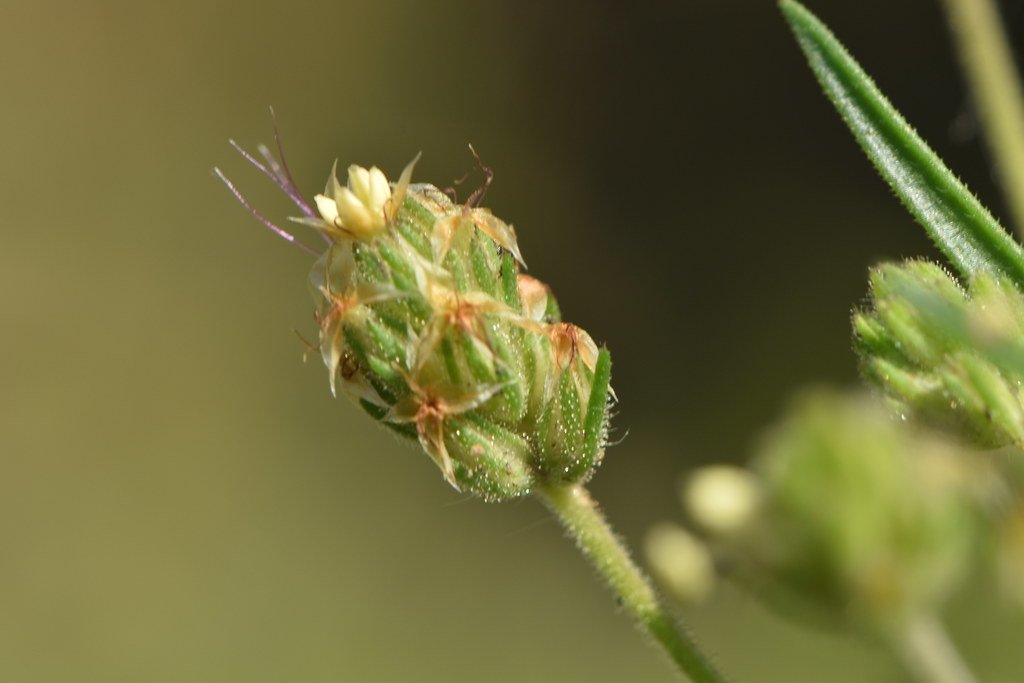
Ever found yourself dreaming of a greener, healthier home, but felt limited by the lack of bright, sunny spots? You’re not alone! Many of us grapple with dimly lit corners or rooms that just don’t get enough natural sunlight, making the idea of an indoor garden seem like a far-off fantasy. But what if we told you that some of nature’s most effective air purifiers actually prefer the chill and shade, and are ready to transform your living spaces into fresh-air havens, even in low light? We’re diving deep into the world of houseplants that go beyond just looking pretty – they’re working overtime to clean the air you breathe.
While the market is flooded with high-tech air purifiers, there’s a charming, living alternative that adds a touch of nature and a pop of color to your space. While it’s true that you’d need quite a few plants to make a truly significant dent in overall air quality compared to a dedicated air purifier (some studies suggest hundreds!), integrating these green companions into your home won’t hurt, and they bring a whole host of other mood-boosting and environmental benefits. They can help neutralize toxins from common household items and simply freshen up stale, musty air.
Ready to discover some truly amazing plants that are known for their air purification prowess and, even better, thrive when the lights are low? We’ve put together a list of the best low-light, air-purifying houseplants that will make you wonder why you ever thought your home wasn’t green-thumb friendly. Get ready to meet your new leafy allies in the quest for cleaner, fresher indoor air, even in those neglected areas that lack windows or abundant natural light. You’re about to have your cake and eat it too with these low-maintenance, health-boosting beauties!
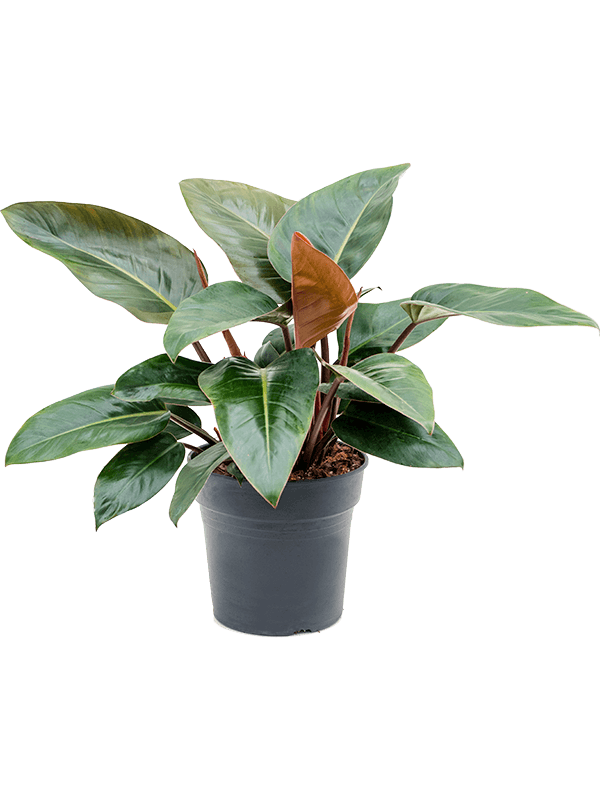
1. Philodendron (Heart-leaf Philodendron)
If your home or office lighting conditions are, let’s say, less than ideal, then the heart-leaf philodendron is about to become your new best friend. This delightful cultivar, with its instantly recognizable heart-shaped leaves, truly shines when it comes to minimal lighting. It’s a fantastic choice for those tricky spots where other plants might struggle, proving that beauty and resilience can indeed go hand-in-hand.
This particular variety has earned its stripes, even landing a spot in NASA’s classic Interior Landscape Plants for Indoor Pollution Abatement report, which remains a foundational resource for identifying the best houseplants for combating airborne health risks. According to NASA, the heart-leafed philodendron is quite adept at cleaning the air of formaldehyde, a common and concerning indoor pollutant. Its ability to thrive in modest light makes it a versatile addition to any home.
Formaldehyde is a chemical compound that can be surprisingly pervasive in our indoor environments, often found off-gassing from flooring materials, electronics, and various other household products. Even in small doses, inhaling formaldehyde can cause your eyes to water and burn, leading to uncomfortable irritation. As exposure levels increase, it might even trigger more severe issues like breathing troubles, persistent coughing, and a burning sensation in your throat and nose.
The wonderful news is that with a heart-leafed philodendron gracing your space, you can significantly reduce your worries about these formaldehyde-related symptoms. This plant actively produces oxygen day and night, offering a continuous breath of fresh air. This constant oxygen release, combined with its toxin-removing properties, makes it an indispensable asset for anyone looking to naturally improve their indoor air quality without needing bright light.
Product on Amazon: Heart Leaf Philodendron cordatum – 2 Plants – World’s Easiest Houseplant-3″ Pots
Brand: Hirt’s Gardens
Binding: Product Group: Lawn & Patio
Price: 22.53 USD
Rating: 4.4 Total reviews: 1032
Indoor/Outdoor Usage: Indoor
Color: Green
Item Weight: 7.1 Pounds
Sunlight Exposure: Full Sun
Unit Count: 2.0 Count
Product Care Instructions: Water
Expected Plant Height: 12 Inches
Moisture Needs: Moderate Watering
Number of Pieces: 2
Features:
1. Proper name: Philodendron cordatum
2. Grows almost anywhere in the house, except full sun
3. Keep soil evenly moist, but not wet or dry
4. Great in a hanging pot
5. Garden & Patio
Shopping on Amazon >>
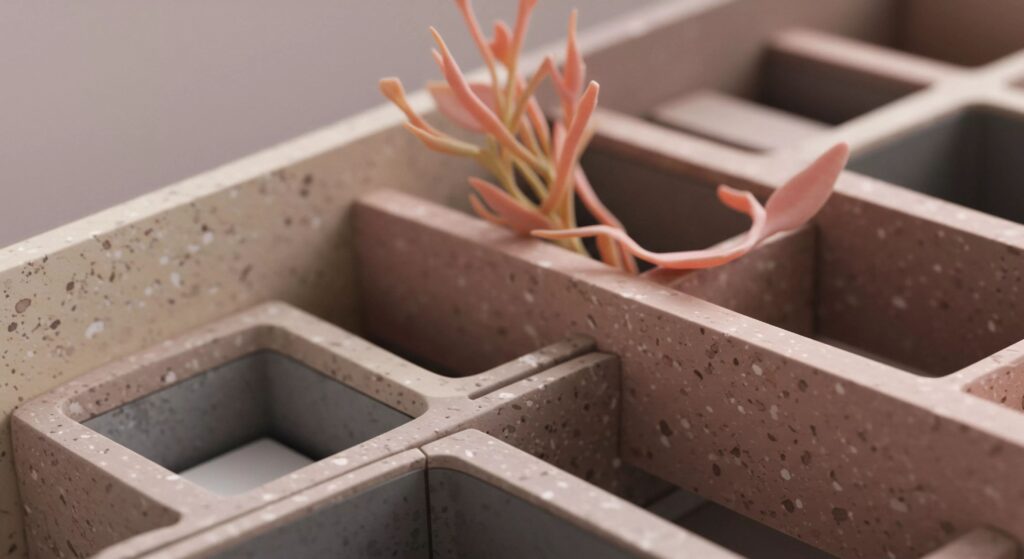
2. ZZ Plant
Don’t let the smooth, waxy leaves of a healthy ZZ plant fool you into thinking it’s a high-maintenance diva. This remarkable plant, formally known as Zamioculcas zamiifolia, has earned a stellar reputation for being incredibly difficult to kill, making it an absolute champion for both seasoned plant parents and those just starting their green journey. Its adaptability extends gracefully to low-light conditions, although it does prefer indirect to moderate light if you can provide it.
The ZZ plant isn’t just tough; it’s also a certified air-purifying superstar. This hardy green friend earned a coveted spot on NASA’s highly recommended list of indoor plants that actively purify the air, a testament to its powerful capabilities. It’s a plant that works diligently behind the scenes, making your home or office a healthier place to be.
One of the ZZ plant’s key talents lies in its ability to reduce the levels of several concerning volatile organic compounds (VOCs) in your indoor air. Specifically, it targets benzene, toluene, and xylene. Benzene, a highly flammable chemical compound that doesn’t easily dissolve in water, can cause dizziness, headaches, and a fast heart rate, and can even be fatal in significant quantities. Toluene, similar to benzene, can lead to insomnia, anxiety, headaches, and a strange sense of euphoria, and more severely, kidney and liver damage. Xylene, another prevalent toxin, might induce nausea, dizziness, and headaches, and can also be fatal at high exposure levels.
Considering the potential health risks associated with these pervasive chemical compounds, having a ZZ plant in your home or office isn’t just a style choice—it’s a smart wellness decision. Its ability to tackle these toxins, coupled with its legendary resilience and tolerance for diverse lighting, makes the ZZ plant an essential, low-effort addition to any indoor space. You’ll be genuinely happy to own one, enjoying its beauty and the cleaner air it provides.
Product on Amazon: Costa Farms ZZ Plant, Live Indoor Houseplant in Modern Decor Planter, Natural Air Purifier in Potting Soil, Gift for Plant Lovers, Birthday Gift, Tabletop Living Room Decor, Desk Decor, 22-Inches Tall
Brand: Costa Farms
Binding: Lawn & Patio Product Group: Lawn & Patio
Price: 49.99 USD
Rating: 4.1 Total reviews: 7479
Indoor/Outdoor Usage: Indoor
Material Feature: Natural
Color: Indoor Planter
Special Feature: Air Purification
Expected Blooming Period: Spring, Summer
Item Weight: 8 Pounds
Sunlight Exposure: Partial Sun
Unit Count: 1.0 Count
Product Care Instructions: Water
Shopping on Amazon >>
Read more about: The Unseen Final Moments: Intriguing Items Found at 12 Celebrity Death Scenes That Revealed Shocking Secrets

3. Peace Lily (Spathiphyllum)
As the seasons change and the sun’s intensity shifts, the peace lily, with its elegant white blooms resembling a surrender flag, appreciates a mindful approach to its lighting. While it thrives when moved to a spot with more moderate light during longer, brighter days, indirect light works best for the majority of the year to encourage those beautiful, faux-white flowers to bloom. This plant’s ability to adapt makes it a cherished addition to many homes.
Among all the plants highlighted in NASA’s seminal study on air purification, the peace lily consistently hovers near the top of the list, and for very good reason. Its efficacy in removing toxicity from the air is truly impressive. It achieves this remarkable feat by either neutralizing or entirely breaking down various harmful chemical compounds, making your indoor environment significantly cleaner and safer.
You’ll find that a peace lily in your home contributes to a noticeable reduction in indoor formaldehyde and benzene levels. But its capabilities don’t stop there; this plant can also actively clear carbon monoxide from the air. We don’t even need to elaborate on why this is such a critical benefit, as carbon monoxide is a silent killer, capable of being deadly very quickly if inhaled in too high quantities. While a peace lily doesn’t replace the need for a carbon monoxide alarm, its presence offers a valuable layer of extra protection and peace of mind.
The ‘Mauna Loa’ variety of peace lily, in particular, is noted for its exceptional air-filtering abilities. A study found that a peace lily with a foliage surface area of 7,960 cm² removed an astounding 41,392 micrograms of benzene toxin from indoor air within just 24 hours! Beyond benzene, peace lilies can also remove ammonia, formaldehyde, and xylene. While peace lilies are easy to grow and care for, producing beautiful white flowers, it’s important to note they are not safe for pets if ingested, so keep them out of reach of your curious cats and dogs.
Product on Amazon: Costa Farms Peace Lily, Live Indoor Plant with Flowers, Easy to Grow Houseplant in Decorative Pot, Potting Soil, Thinking of You, Get Well Soon Gift, Room Decor, 1 Foot Tall
Brand: Costa Farms
Binding: Lawn & Patio Product Group: Lawn & Patio
Price: 31.92 USD
Rating: 4.1 Total reviews: 7912
Indoor/Outdoor Usage: Indoor
Material Feature: Natural
Color: Indoor Garden Plant Pot
Special Feature: Air Purification
Expected Blooming Period: Summer
Item Weight: 2 Pounds
Sunlight Exposure: Partial Sun
Unit Count: 1.0 Count
Expected Planting Period: Year-Round
Shopping on Amazon >>

4. Pothos (Golden Pothos / Devil’s Ivy)
The pothos, often affectionately known as devil’s ivy or golden pothos, is another stellar choice for your indoor plant collection, especially if your lighting conditions are a bit less than exemplary. This adaptable plant isn’t just forgiving of dimmer environments; it also impressively withstands colder air and reduced humidity levels, often performing well even when conditions aren’t perfectly aligned with its usual preferences. It’s truly a plant that rolls with the punches.
The golden pothos, specifically, is a marvel of versatility when it comes to light. It happily grows in low light, medium light, and even bright light, making it suitable for almost any room in your house. Its vine-like growth pattern adds a graceful cascade of foliage, making it a beautiful and functional decor piece. It can trail elegantly from shelves or hanging baskets, adding a touch of natural beauty wherever it is placed.
Renowned for being exceptionally effective at cleaning the air, the golden pothos will work tirelessly to clear your apartment or cubicle of a formidable list of toxins. These include xylene, carbon monoxide, formaldehyde, toluene, and benzene. It’s a comprehensive clean-up crew in a single plant, addressing some of the most common and concerning airborne pollutants found in indoor spaces.
Now that you’re well-versed in the potential health impacts of these chemical compounds—ranging from dizziness and headaches to more severe respiratory issues and organ damage—you’ll undoubtedly appreciate having a golden pothos around. It’s not just a pretty face; it’s a hardworking air purifier that requires minimal effort, needing watering only every seven to ten days. However, be aware that pothos is toxic to cats and dogs, potentially causing swelling and irritation if ingested, so placement in pet-free areas or out of reach is crucial.
Product on Amazon: Golden Pothos Plant Live House Plant Live Plants, Trailing Plants Live Houseplants, Golden Pothos Live Plant Houseplant, Live Pothos Devils Ivy Live Plant Money Plant Indoor Plants by Plants for Pets
Brand: Plants for Pets
Binding: Lawn & Patio Product Group: Lawn & Patio
Price: 16.17 USD
Rating: 4.2 Total reviews: 4863
Indoor/Outdoor Usage: Indoor
Material Feature: Biodegradable, Compostable
Color: Gold
Special Feature: Air Purification
Sunlight Exposure: Full Sun
Unit Count: 1.0 Count
Product Care Instructions: water
USDA Hardiness Zone: 3
Soil Type: pot soil
Features:
1. LIVE POTHOS PLANT DELIVERY: Each order includes one fully-rooted golden pothos in a 4″ pot. Devil’s ivy (Epipremnum aureum) is a beautiful, easy to grow house plant.
2. EASY TO GROW HOUSE PLANTS: Brighten up your space with this variegated plant. Bring the beauty of nature inside by growing alongside other office plants and desk plants.
3. REAL PLANT CARE: Plant lovers appreciate the durability of this hardy plant. Pothos plants are low light tolerant and persevere in challenging conditions.
4. ABOUT PLANTS FOR PETS: Plants and animals make everything better, from simply raising our spirits to enriching our everyday lives. That’s why a portion of every purchase is directed to our mission to help place shelter animals in happy homes.
5. HEATWAVE ADVISORY: Please consider local temperatures before placing an order. Your plants may arrive damaged/wilted if shipped in temperatures exceeding 95° and left unattended in extreme heat. We strongly recommend unboxing your delivery immediately upon arrival.
Shopping on Amazon >>
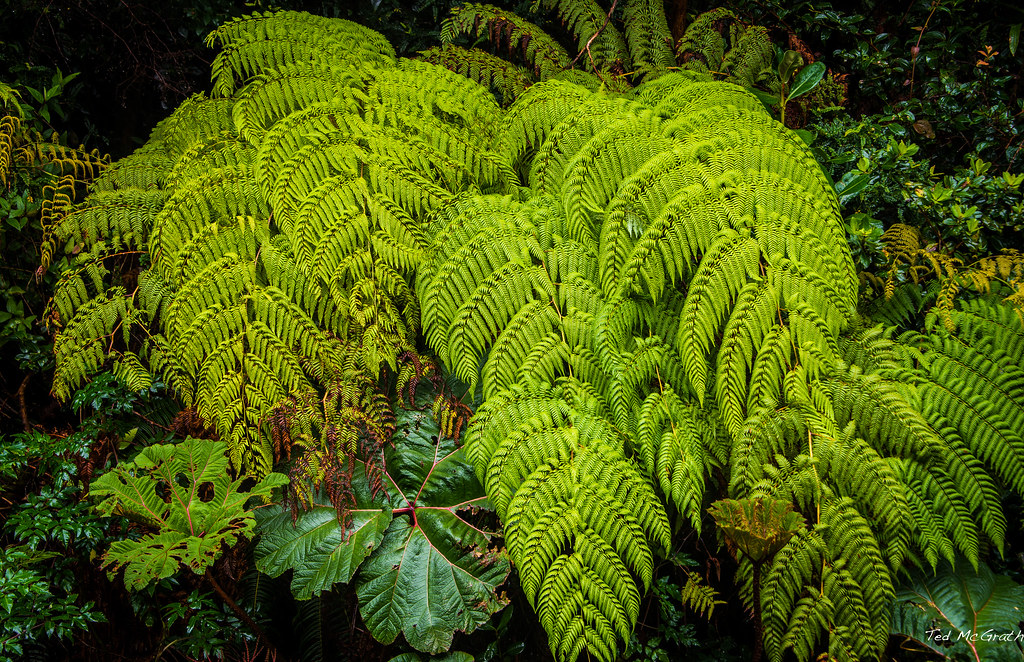
5. Boston Fern
If you’re wondering which fern to bring into your low-light abode, the Boston fern should definitely be on your shortlist. This classic houseplant is particularly receptive to lower lighting conditions during the autumn and winter months, which is quite convenient since natural light tends to dwindle during these times anyway. Even at its most demanding, the Boston fern is not a light hog, requiring just about two hours of indirect light daily, a perfectly manageable requirement for most indoor settings.
Whether your Boston fern graces your desk at work, adding a calming green presence to your tasks, or sits on a windowsill at home, gently filtering the light, its minimal light requirements make it a flexible choice. This adaptability means you don’t need to worry about extensive sunlight access, opening up possibilities for adding greenery to more interior spaces than you might have thought possible. It’s an easy-going companion that fits right in.
In return for its modest light needs, the Boston fern offers a fantastic reward: it actively contributes to cleaner air around you. This plant is known for its ability to rid the air of various toxins, improving your indoor air quality in a natural, unobtrusive way. Beyond its purifying capabilities, the Boston fern also serves as a natural humidifier, releasing beneficial moisture into the air. This can be particularly advantageous in dry indoor environments, helping to alleviate issues like dry skin or irritated respiratory passages.
The Boston fern, specifically the Nephrolepis exaltata ‘Bostoniensis’ variety, is an excellent choice for pet owners as it is listed among pet-safe air-purifying plants. Its non-toxic nature allows you to enjoy its lush, feathery foliage and air-cleaning benefits without the constant worry of harm to your furry friends, even if they decide to get a little too curious. This makes it a stress-free addition for families with cats and dogs looking to enhance their indoor air quality safely.
Product on Amazon: Costa Farms Boston Fern Live Plant, Outdoors or Indoor Houseplant in 10-Inch Hanging Basket Planter, Ferns Soil Mix, Real Plants Gift, Housewarming, Patio, Balcony, Front Porch Decor
Brand: Costa Farms
Binding: Lawn & Patio Product Group: Lawn & Patio
Price: 23.99 USD
Rating: 4.2 Total reviews: 2794
Indoor/Outdoor Usage: Indoor
Material Feature: Flower Pot
Color: Hanging Basket
Special Feature: Air Purification
Expected Blooming Period: No Blossoms
Item Weight: 5 Pounds
Sunlight Exposure: Full Shade
Unit Count: 1.0 Count
Expected Planting Period: Year-Round
Features:
1. LIVE FERN PLANT: Bring home a beautiful Boston Fern house plant that is easy to care for and thrives in any indoor or outdoor space. Ferns add instant curb appeal by placing them in hanging baskets on your patio or porch, on the edge of an bookcase or shelf
2. READY TO GROW: Your new live indoor plant arrives well-packed with care instructions. Keep it happy, healthy, and growing by placing it in bright, indirect sunlight and giving it 2-3 cups of water about once a week. Adjust as needed for your environment
3. ELEVATE MOOD & WELLBEING: Plants make us happy. They give us life, fresh air and a sense of calm – all of which have the ability to lift your mood and improve your wellbeing. NASA studies show having plants improves mood, creativity and reduces stress
4. UNIQUE GIFT IDEA: Surprise your loved ones with a live Boston Fern, ready to be gifted for any occasion, including birthday, anniversary, and housewarming. It’s a refreshing alternative to flowers or typical gifts, creating a lasting memory that shows you care
5. GORGEOUS HOME DECOR: Ferns are decorative houseplants that add instant flair to your indoor or outdoor home decor with their lush, green foliage. Ready to be enjoyed and admired after unboxing for placement in any living room, patio, porch, or office
Shopping on Amazon >>
Read more about: The Rifleman’s Final Chapter: Tracing Chuck Connors’ Life, Legacy, and Cause of Death
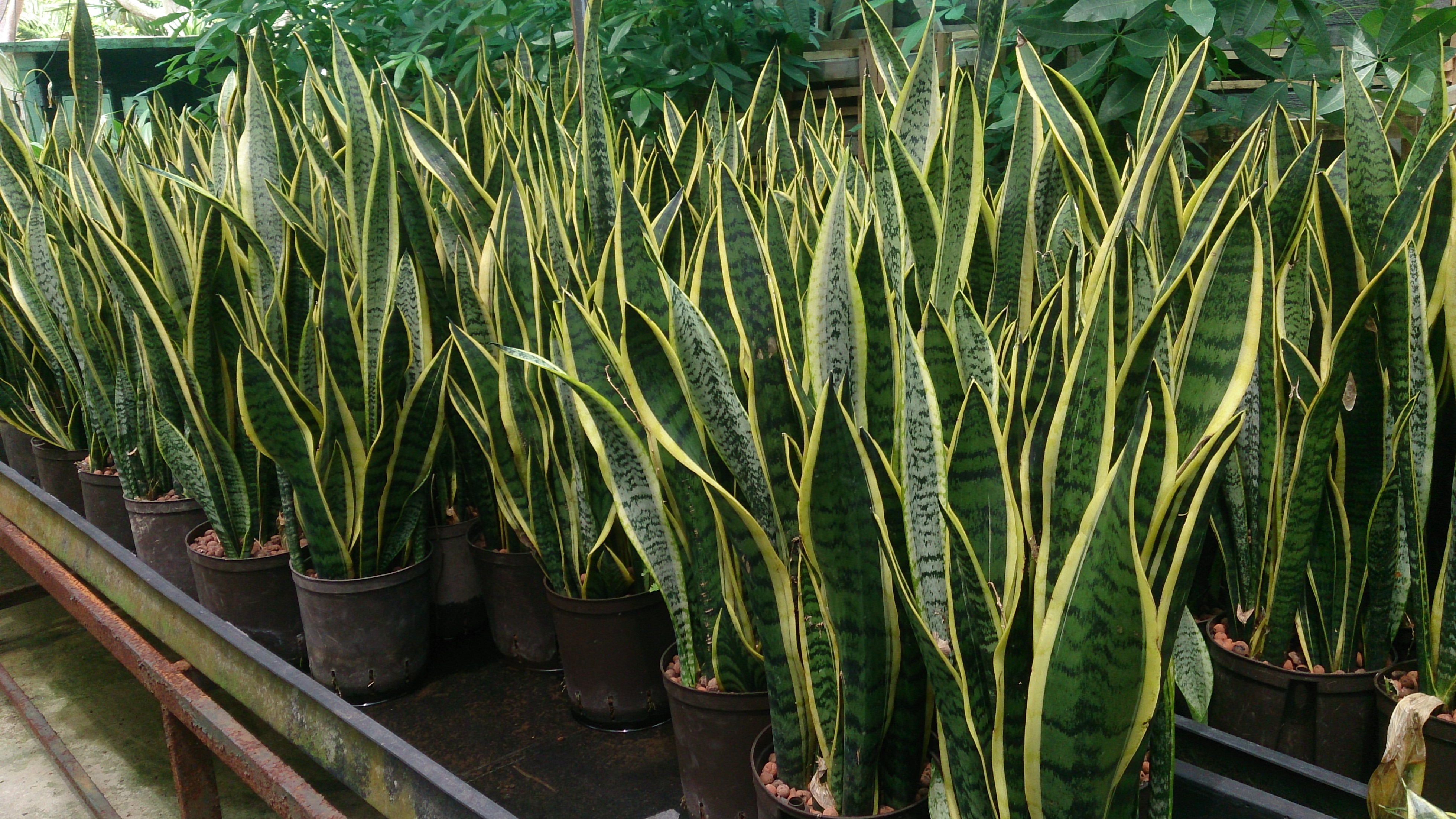
6. Snake Plant (Sansevieria laurentii)
Ah, the Sansevieria trifasciata, more commonly known as the snake plant or mother-in-law’s tongue, is an absolute staple in any thriving indoor garden, and for very good reason. This resilient plant couldn’t care less if your lighting isn’t the greatest, showcasing an impressive versatility as it can grow equally well in low light as it can in full sun. This makes it an incredibly forgiving and adaptable choice for diverse home environments, from sun-drenched rooms to shadowy corners.
While it’s tolerant of a wide range of light conditions, for the longest and healthiest life out of your snake plant—which can span an impressive 10 years or more—indirect light is truly ideal. This balance allows it to flourish, maintaining its striking upright leaves and vibrant patterns. The snake plant is also celebrated for a unique trait: it’s one of the few indoor plants that consistently releases oxygen both during the day and, notably, at night, making it an excellent choice for bedrooms to keep the air fresh while you sleep.
Beyond its oxygen-producing prowess, the snake plant’s long, sword-like leaves are remarkably adept at absorbing dangerous toxins that might be lingering in your air. It’s a comprehensive clean-up crew, tackling a host of volatile organic compounds including benzene, formaldehyde, toluene, xylene, and trichloroethylene. These compounds are commonly emitted from household products, building materials, and even furniture, making the snake plant an invaluable natural filter.
A specific variety, the Sansevieria laurentii, with a total leaf surface area of 3474 cm², has been shown to remove up to 9727 micrograms of formaldehyde and other indoor toxins in a mere 24 hours. While snake plants are easy to grow and maintain, tolerating drought and needing water only when the soil is dry, they are considered mildly toxic to pets if ingested in large amounts. So, while generally safe, it’s wise to place them where curious paws and mouths are less likely to encounter them, especially given their sensitivity to extreme temperatures, which means avoiding the kitchen.
Product on Amazon: Live Snake Plant, Sansevieria trifasciata Laurentii, Fully Rooted Indoor House Plant in Pot, Mother in Law Tongue Sansevieria Plant, Potted Succulent Plants, Sansevieria laurentii by Plants for Pets
Brand: Plants for Pets
Binding: Lawn & Patio Product Group: Lawn & Patio
Price: 19.69 USD
Rating: 4.5 Total reviews: 12712
Indoor/Outdoor Usage: Indoor, Outdoor
Material Feature: Organic
Color: Standard Pot
Special Feature: Drought Tolerant
Item Weight: 0.94 Pounds
Sunlight Exposure: Full Sun
Unit Count: 1.0 Count
Soil Type: well drained soil
Moisture Needs: Regular Watering
Shopping on Amazon >>

7. Anthurium
The appealing anthurium, with its stunningly vibrant red (or sometimes other colors) waxy, heart-shaped flowers, certainly catches the eye. However, to truly appreciate an abundance of those captivating blooms, you might need to adjust your expectations if your lighting conditions are on the dimmer side. While growth of the flowers may be decelerated in low light, it’s actually a far better scenario than direct, harsh sunlight, which can easily scorch this houseplant’s delicate leaves and diminish its overall vigor.
Despite potentially fewer blooms in minimal light, the anthurium still holds significant value beyond its noteworthy beauty. This plant deserves considerable acclaim because of its powerful air-purifying capabilities. It is particularly effective at clearing the air of both formaldehyde and ammonia, two prevalent and concerning indoor pollutants that can affect your health and comfort. Its consistent contribution to cleaner air makes it a worthwhile addition to any space.
Like many dangerous gases, ammonia is colorless, making it undetectable by sight, but it possesses a distinct and quite unpleasant smell. This hydrogen and nitrogen compound, often found in household cleaners and from pet urine, can cause significant irritation to your throat and nose, often leading to persistent coughing. In higher quantities, exposure to ammonia can result in a burning sensation in your respiratory tract, throat, and nose, with prolonged exposure potentially leading to severe respiratory failure and damage to your airways.
Given these serious health risks, it becomes quite clear that adding some anthurium to your indoor garden is not just about aesthetics; it’s a proactive step towards a healthier living environment. Its ability to combat formaldehyde and particularly ammonia makes it an essential plant for pet owners or anyone using strong cleaning products. This plant actively works to mitigate these unseen dangers, providing you with cleaner, safer air to breathe, stat!”
Ready to dive into even more green powerhouses that are perfect for those less-than-sunny spots in your home? We’ve already explored some fantastic flora, but the world of low-light, air-purifying plants is surprisingly vast and full of resilient beauties just waiting to make your indoor spaces healthier and happier. Get ready to discover the next batch of leafy legends that will have you breathing easier and wondering why you didn’t go green sooner!
Read more about: Unlocking Your Green Thumb: Essential Care Secrets for Thriving Houseplants, According to Experts

8. Spider Plant (Chlorophytum elatum)
While the ZZ plant often steals the spotlight for its ability to thrive in just about any condition, the humble spider plant is equally versatile and just as impressive when it comes to adapting to diverse environments. Whether it’s nestled in a pot on your desk or cascading from a hanging basket, this adaptable houseplant doesn’t fuss over light levels, even making peace with primarily artificial light. It’s a true survivor and a fantastic choice for any room in your home.
NASA, the authority on clean air, ranks the spider plant incredibly high on its list of air-purifying houseplants. If you’re concerned about formaldehyde, a common indoor pollutant often found in furniture polish, paint thinner, and even tobacco smoke, then a spider plant or two is exactly what you need. This green hero is capable of clearing formaldehyde at an astonishingly high rate, removing up to 90 percent of it from the air.
Beyond formaldehyde, the spider plant is a true multi-tasker, diligently working to remove other nasty toxins like xylene and toluene from your indoor air. In fact, a specific variety tested, the Chlorophytum elatum with a leaf surface area of 2471 cm², removed a remarkable 10378 micrograms of formaldehyde over a mere 24 hours. Imagine that kind of purification happening naturally in your living space!
The benefits don’t stop there. Spider plants also contribute to removing carbon monoxide and ozone, and they even help increase the humidity in your home, which can be a real boon in dry indoor environments. Plus, for all you pet parents out there, the spider plant is a safe choice for cats and dogs and even helps remove ammonia from the air, making it perfect for homes with furry friends who might occasionally have an accident.

9. Dracaena
If you’re looking for a houseplant that offers both striking visual appeal and serious air-purifying muscle, look no further than the Dracaena. This diverse genus boasts many varieties, with popular choices like the ‘Warneckii’ reaching impressive heights of up to 5 feet tall and 24 inches wide, making it a noticeable yet manageable presence in your indoor jungle. Its ability to tolerate low light conditions, even if it thrives best with bright indirect light, makes it a flexible option for various rooms.
Dracaena species were among the top performers in NASA’s pivotal air purification study, proving their efficacy in naturally cleaning indoor air. They are particularly adept at filtering out a wide array of harmful volatile organic compounds, including benzene, formaldehyde, trichloroethylene, toluene, and xylene. These are all common culprits found in household products and building materials, so having a Dracaena means a powerful natural detoxifier is at work.
While Dracaena is a fantastic air cleaner, it’s worth noting that most varieties do not remove ammonia from indoor air, a point to consider if pet odors are a primary concern for you. Furthermore, it’s important for pet owners to exercise caution, as Dracaena plants are toxic to both cats and dogs if ingested. Therefore, it’s highly recommended for households without pets or in spaces where curious paws and mouths won’t have access.
Despite its toxicity to pets, the Dracaena’s relatively small size compared to other indoor trees makes it a smart choice for apartments or homes with limited square footage. You can happily grow a Dracaena in your bedroom, living room, or other indoor spaces, enjoying its elegant foliage and the cleaner air it provides. Just remember to offer it bright indirect light to promote healthy growth, even though it won’t complain too much in lower light conditions, and water it once a week to keep the soil consistently moist.
Read more about: Words Have Power: The Disturbing Experiment Where A Bullied Plant Died

10. Bamboo Palm (Chamaedorea seifritzii)
Imagine bringing a touch of the tropics into your home that not only looks beautiful but also actively works to purify your air! The Bamboo Palm is an exceptional choice, earning its stripes as a highly recommended air-purifying tree. Its graceful, feathery fronds bring an immediate sense of calm and natural elegance to any indoor setting, making it a decorative and functional plant for your green space.
This impressive palm is a true champion when it comes to tackling indoor air pollution. It diligently cleanses the air by removing a formidable list of toxins, including formaldehyde—a chemical commonly found in various household cleaning products like bleach, detergents, and fabric softeners. But its detoxifying prowess doesn’t stop there; the Bamboo Palm also effectively removes benzene, toluene, xylene, and trichloroethylene from your indoor environment, providing a comprehensive clean-up.
One of the most appealing aspects of the Bamboo Palm, especially for families, is its pet-safe nature. Unlike some other powerful air purifiers, this plant is safe for both dogs and cats, allowing you to enjoy its lush greenery and air-cleaning benefits without worry. It stands out as an excellent oxygen-purifying plant that successfully removes most airborne toxins, with the exception of ammonia.
Growing between 4 to 12 feet tall indoors, the Bamboo Palm is a slow grower, making it perfectly suitable for pots and easier to manage in smaller apartments. You can trim it back occasionally to maintain its size, ensuring it doesn’t outgrow your space. For optimal care, provide your Bamboo Palm with bright indirect light or a brief morning exposure to direct sun (no more than two hours), and aim for moderate humidity levels to keep it thriving. Remember to water it once a week, allowing the soil to dry slightly between waterings to prevent root rot.

11. Weeping Fig (Ficus benjamina)
For those dreaming of a majestic indoor tree without the drama of excessive light demands, the Weeping Fig is an excellent consideration. These elegant figs typically grow between 3-6 feet tall indoors, making them a fantastic choice for air purification in homes with limited space where a larger plant might otherwise feel overwhelming. Their graceful form and abundant foliage add a sophisticated touch to any room.
One of the most appealing features of the Weeping Fig, especially for this list, is its remarkably low light requirement. It doesn’t need much light to grow successfully, which means you can comfortably place it closer to windows in rooms that don’t get a ton of sun, such as bedrooms and bathrooms. This adaptability makes it a versatile addition to those often-neglected areas that could use a touch of green and cleaner air.
Beyond its aesthetic charm, the Weeping Fig is a capable air purifier, adept at removing several common indoor pollutants. It specifically targets and cleanses your air of formaldehyde, toluene, and xylene. These are ubiquitous chemical compounds that can off-gas from furniture, carpets, and various household products, so having a Weeping Fig is like having a silent, green sentinel guarding your indoor air quality.
However, it’s important to note that while effective against many toxins, Weeping Figs cannot detoxify your indoor air of ammonia pollution, benzene, or trichloroethylene. Additionally, for households with pets, it’s crucial to know that the Weeping Fig is not safe for cats and dogs, so careful placement out of reach is advised. For care, this tree is relatively easy, preferring well-draining soil and watering only when the top inch or two of the soil feels dry, while thriving in average room temperatures. Regular pruning will help maintain its shape and size, preventing it from becoming too bushy for your space.

12. Banana Plant (Musa oriana)
Who knew you could have a tropical paradise right in your living room that’s also working hard to keep your air clean? Dwarf banana plants, specifically the Musa oriana variety, are a fantastic and somewhat unexpected choice for indoor air purification. Their most striking feature is their generously sized leaves, which provide a huge surface area for absorbing airborne toxins and releasing that refreshing, clean oxygen we all crave.
These leafy giants are particularly effective at tackling formaldehyde, a persistent pollutant that’s often emitted by modern building materials, especially when those materials are warmed or exposed to sunlight. By housing a dwarf banana plant, you’re essentially deploying a natural defense mechanism against this common indoor chemical, contributing to a healthier breathing environment for you and your family.
Dwarf banana plants offer a substantial presence, typically growing between 5 and 9 feet tall, with leaves that can stretch up to 2 feet wide or even longer at maturity. This impressive size makes them ideal for filling up empty corners or gracing the area near windows, where they can truly make a statement. Don’t let their tropical origins intimidate you; these plants are quite manageable indoors with the right care.
Caring for a dwarf banana plant isn’t overly complicated. They appreciate bright indirect light, ideally near south-facing windows, which aligns perfectly with the needs of many low-light-tolerant plants on this list. You’ll want to water them regularly, but only when the soil feels slightly dry to the touch, usually one to two times per week. And here’s a fantastic bonus for pet owners: the banana plant is considered safe for pets, allowing you to enjoy its exotic beauty and air-purifying prowess without concern for your furry friends.

13. Chinese Evergreen (Aglaonema modestum)
If there’s one plant on this list that truly *loves* low light, it’s the Chinese Evergreen. Many houseplants merely tolerate dimmer conditions, but for the Aglaonema modestum, low light is actually its favorite! This makes it an absolutely perfect candidate for those trickier, less-lit spaces in your home, like bedrooms or bathrooms that might not have abundant natural light. Its compact size paired with its large leaves ensures maximum oxygen release, even in modest settings.
NASA specifically recommends the ‘silver queen’ cultivar, also known as Aglaonema crispum, for its exceptional air-cleaning abilities. This variety is not just effective but also stunningly beautiful, with its elegant silver and green patterned leaves adding a touch of sophisticated greenery to your décor. It’s a plant that works hard behind the scenes to purify your air while looking absolutely gorgeous doing it.
The Chinese Evergreen is a formidable opponent against two common and concerning indoor toxins: benzene and formaldehyde. These pollutants are found in a surprising number of everyday items, from cleaning products to synthetic fabrics, so having a plant that actively neutralizes them is a huge win for your indoor air quality. This plant simplifies healthy living, requiring minimal fuss for maximum impact.
While it’s a low-light champion, the Chinese Evergreen does appreciate moderate to high humidity. This makes it an ideal choice for bathrooms, where it can thrive in the naturally moist environment. If your home’s humidity is on the lower side, a frequent misting will keep your plant happy and healthy. However, a word of caution for pet owners: this plant is slightly toxic to both cats and dogs, so careful placement out of reach is a must to ensure your furry friends stay safe.

14. Aloe Vera Plant
Beyond its renowned medicinal properties, the Aloe Vera plant is a natural succulent powerhouse when it comes to purifying your indoor air. This popular plant, often found in first-aid kits for its soothing gel, gracefully fits into low-light environments, proving that beauty and function can indeed thrive together without needing constant sunshine. It’s an essential addition for anyone seeking a multifaceted plant companion.
The Aloe Vera plant has been scientifically recognized for its air-cleaning capabilities, particularly its effectiveness at removing formaldehyde and benzene—two of the most prevalent and harmful toxins found lingering in our homes. According to a NASA study, an Aloe Vera succulent with a total leaf surface area of approximately 713 cm² demonstrated its prowess by removing an impressive 1,555 micrograms of formaldehyde from indoor air in just 24 hours. That’s some serious air-scrubbing power from a single plant!
Despite its potent abilities, it’s worth noting that the Aloe Vera plant is a specialist rather than a generalist in air purification. It excels at tackling formaldehyde and benzene toxins, but it cannot single-handedly remove a broader spectrum of pollutants like bacteria, viruses, allergens, ammonia, or trichloroethylene. To achieve comprehensive air purification, it’s recommended to grow Aloe Vera alongside other air-cleaning plants, creating a dynamic green team for your home.
Caring for this low-maintenance succulent is a breeze, making it perfect for busy individuals or beginner plant parents. It thrives well in fairly low light conditions, needing about six hours of bright indirect light each day to stay happy. Water it sparingly, typically once every one to two weeks, allowing the soil to dry out completely between waterings. Growing to a manageable size of 24-39 inches tall, it’s also mildly toxic to pets, so strategic placement away from curious critters is a wise decision.
Read more about: Honestly, What Happened? 15 Once-Beloved American Foods That Vanished from Our Tables
So there you have it – a comprehensive lineup of truly incredible houseplants that prove you don’t need a sun-drenched conservatory to enjoy the beauty and health benefits of indoor greenery. From battling stubborn toxins like formaldehyde and benzene to adding a touch of natural humidity and, yes, even cleaning up after our beloved pets, these low-light champions are ready to transform your home. Whether you’re a seasoned plant parent or just starting your green journey, these resilient, air-purifying beauties are ready to make your indoor spaces fresher, healthier, and undeniably happier. What are you waiting for? It’s time to bring on the botanical bliss and breathe a little easier!



